There are two types of structural elements commonly used in arched guitar tops. In the 1920s Lloyd Loar, the designer of the Gibson L-5, the first arch top guitar with F holes, used two tone bars that are roughly parallel, running from near the neck block lengthwise along the top to near the tail block, with the spacing widening slightly towards the tail block. Then in 1934 with the first Super 400, Gibson used X braces like Martin had already been using on its dreadnaught guitars for about a decade; the arms and legs of the X run from the upper bout on one side to the lower bout on the opposite side, crossing just before (on the neck side of) the bridge. Both types of structural elements have advantages and disadvantages. X braces are inherently weak at the joint where one brace is notched over the other, but sound warmer and darker. They extend over a wider area. Parallel tone bars are strong and create a top that projects well, but can sound cold or overly bright. They are better at resisting string pressure. Nearly all arch top guitars have used either parallel tone bars or X braces. These structural elements have both been in use for the better part of a century now.
For my arch tops, I want the advantages of both types of structural elements, and do not want the disadvantages of either. I wanted to create tone bars that would start near the upper and lower bouts, like X braces, but not cross; they would curve to be parallel in the critical area near the bridge, and then continue to curve back out to the other bout on the same side. I wanted to implement this idea without having to bend or laminate the tone bars, or get too extravagant in dedicating a big piece of spruce to carve each tone bar as a whole separate structure. I invented a solution that gives me the configuration I wanted, and I believe it has some other significant benefits. I call my design “integrally carved curvilinear tone bars”.
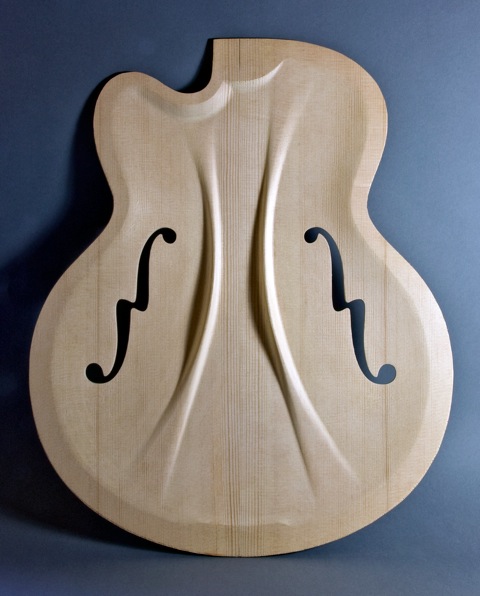
One additional benefit of my design is that there are no glue joints or wood grain transitions involved in these structural elements. Aside from the center seam, the whole top structure is one integral piece of wood. To the extent that glue joints and wood grain transitions are barriers to string energy, my integrally carved design is that much better at string energy propagation. Another benefit is that the integral tone bars are not just as tall as their highest point above the inside surface of the top; the vertical grain wood extends all the way to the outside surface of the top. If anything, I believe they are stiffer for their size than conventional tone bars, in the critical central area. They are also more flexible than conventional tone bars as they fan out to the periphery of the top. I believe this integrally carved curvilinear tone bar design is a big part of why my arch top guitars sound the way they do.
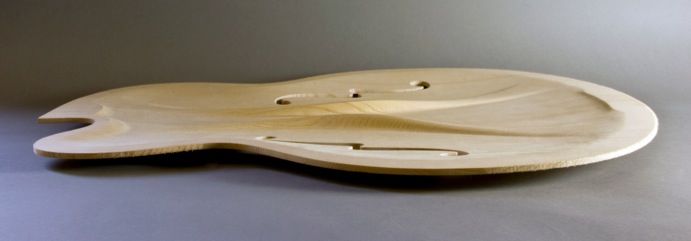
The top shown on this page is for an 18” Skylark in Alaskan Sitka Spruce.
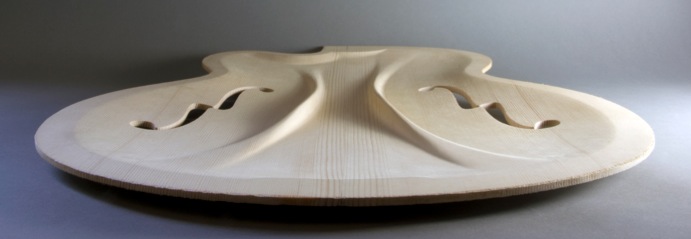


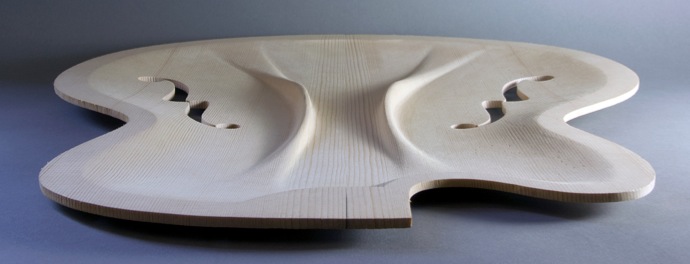

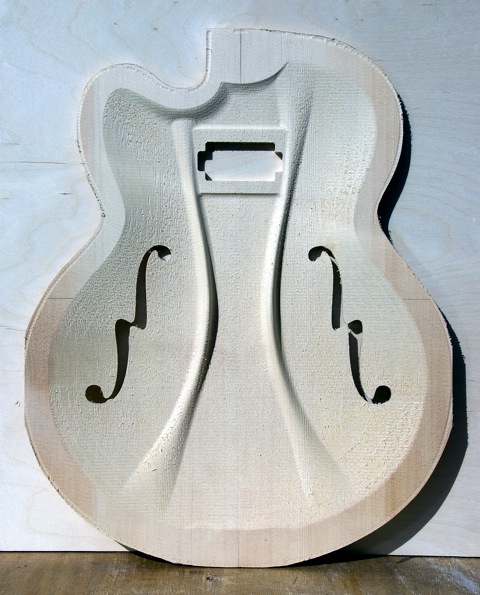
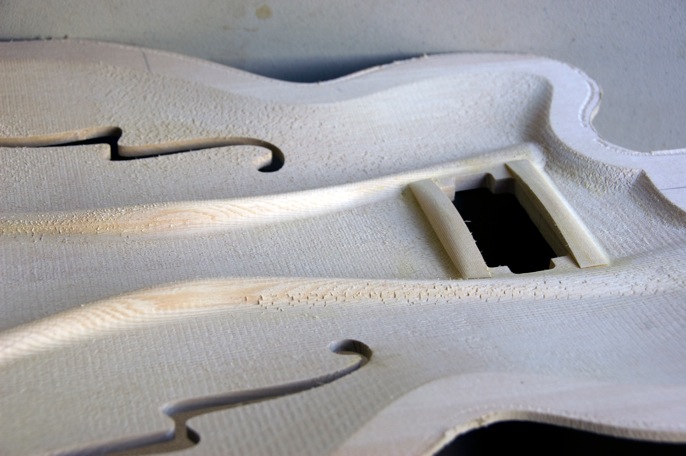
The cross grain braces have been added. This top is shown at the rough carved stage; some hand finishing remains to be done.
 A second generation Pannonica top ready to be glued on to its body.
A second generation Pannonica top ready to be glued on to its body.
